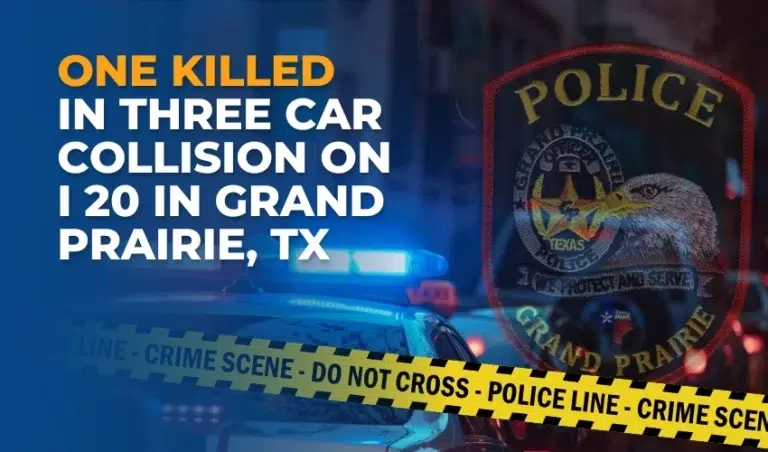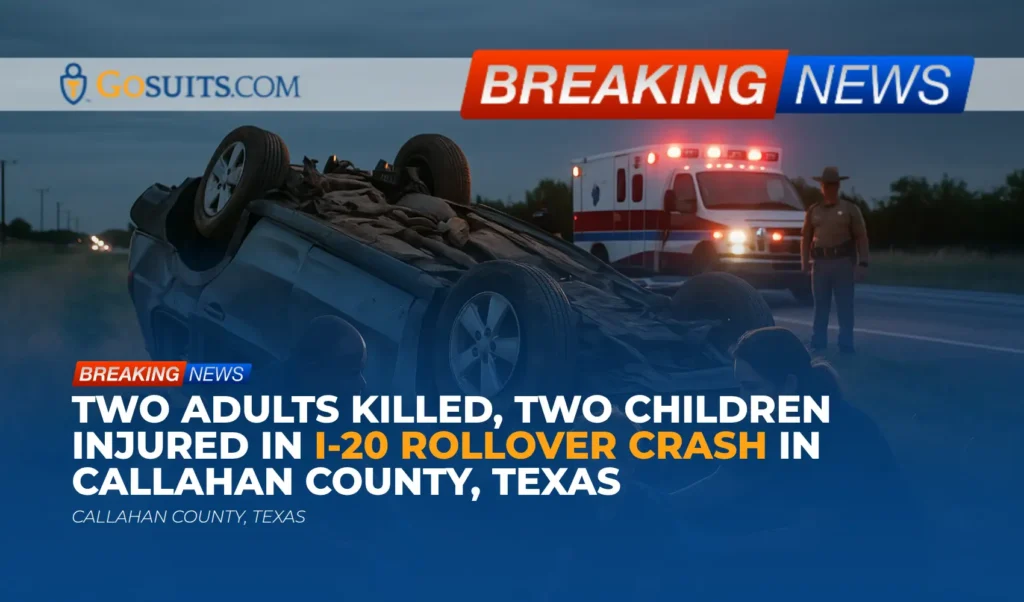Grand Prairie, TX | April 6, 2025
A driver was killed in a three vehicle collision Sunday morning along Interstate 20 near Carrier Parkway.
According to the Grand Prairie Police Department, the accident happened shortly before noon in the eastbound lanes of I 20.

One Killed in Three Car Collision on I 20 in Grand Prairie, TX
Authorities report that a Dodge passenger car traveling eastbound collided with a Ford truck. The force of the impact caused the Ford to strike a Hyundai passenger car.
The driver of the Dodge was transported to a nearby hospital, where he was pronounced deceased by medical staff. The occupants of the Ford truck and the Hyundai were not injured in the crash.
Witnesses at the scene indicated that the Dodge appeared to be traveling at a high rate of speed prior to the collision. The identity of the deceased has not yet been released pending notification of next of kin by the Tarrant County Medical Examiner’s Office.
At this time, the collision remains under investigation. No additional details have been released.
When covering serious incidents like this, the priority must always be ensuring that the families of the deceased and everyone else affected have access to a full, truthful account of what happened. A tragic loss on the road leaves more than just physical damage—it leaves grieving families with urgent questions about how and why their loved one’s life was taken.
In multi-vehicle crashes like this one, speed is often cited as a primary factor. However, early assumptions can sometimes overlook critical details. Thorough investigations often reveal that collisions are rarely caused by just one element. Instead, they tend to arise from a combination of factors, each of which needs to be properly examined. To truly understand what led to the tragedy, three major areas demand close attention:
First, was the investigation thorough and unbiased?
Accurate crash investigations require much more than a simple police report. Investigators must meticulously document the scene, including tire marks, vehicle positions, debris patterns, road conditions, and lighting at the time of the accident. They should interview all available witnesses and review any nearby surveillance footage or dashcam recordings to establish a clear sequence of events. Without this level of detail, critical pieces of the puzzle can be missed, leading to an incomplete or even incorrect understanding of the crash.

Second, were all possible vehicle issues considered?
It is not uncommon for mechanical failures—such as brake malfunctions, steering problems, tire blowouts, or electrical system failures—to contribute to or even cause serious accidents. A vehicle traveling at high speed may seem reckless at first glance, but if its brakes failed or if a tire blew out, the story changes significantly. A detailed inspection of each vehicle involved is essential to rule out defects or mechanical failures that may have played a role.
Third, was all electronic and digital evidence recovered and analyzed?
Most modern vehicles are equipped with Event Data Recorders (EDRs), sometimes referred to as “black boxes.” These devices store valuable information such as vehicle speed, brake usage, throttle position, and steering inputs in the seconds leading up to a collision. Downloading and examining this data can provide undeniable insights into the behavior of the vehicles and drivers before impact. Additionally, investigators should gather GPS records, cell phone activity, traffic camera footage, and even data from nearby businesses’ security systems to reconstruct the timeline as accurately as possible.
Beyond these three steps, it is equally important to consider environmental factors. Was there road construction in the area? Were there signs warning drivers about potential hazards? Was the road surface wet, uneven, or damaged in ways that could have contributed to the crash? Sometimes external factors play an invisible but decisive role in accidents.
Ultimately, thorough answers to all of these questions are essential—not only for understanding what happened but for ensuring that any responsible parties are held accountable and that lessons are learned to prevent similar tragedies in the future. Those affected by this crash deserve clear answers backed by evidence, not assumptions. Only with a complete investigation can justice and closure truly begin.






